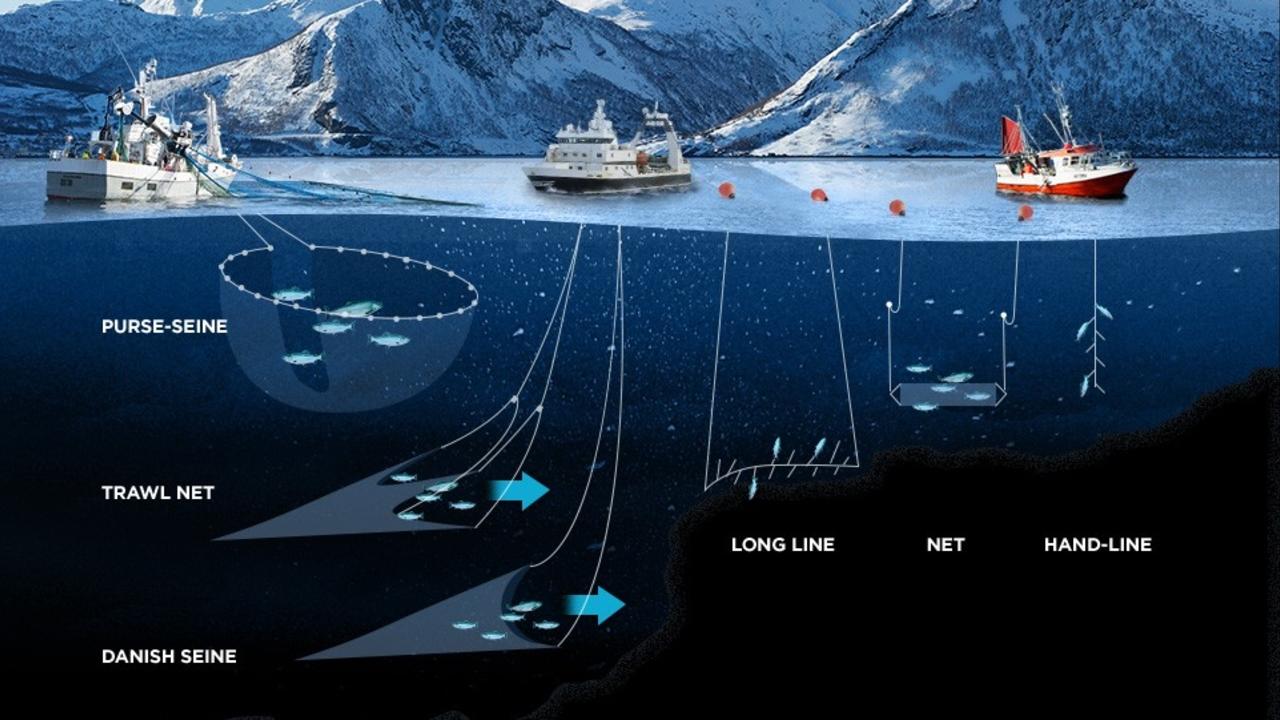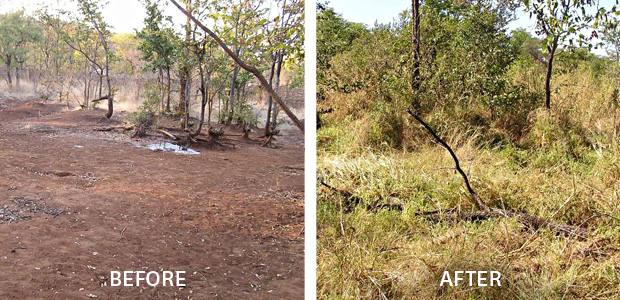Ocean Friendly Gardens, Farms & Landscapes

By installing ocean friendly gardens, farms, or landscapes, you protect and help regenerate local fisheries and ocean life. Simple steps, like reducing sediment runoff by keeping exposed soil covered with mulch is just one small way you can be a part of solution in healing our oceans. A local San Diego organization comitted to improving local ecology through our food system is the San Diego County Food System Alliance (SDFSA). Ecology Artisans is a voting member of SDFSA, and a privilege of being a member is attending bi-monthly voting member meetings. The alliance is made up of different working groups such as the Reducing Barriers to Farmers Group or the Urban Agriculture Group.
Ocean Friendly Gardens Regenerate Fisheries
The newest working group in the alliance is the Sustainable Seafood System Group. At our most recent gathering, we had the privilege of receiving a presentation from Dave Rudie, the President of Catalina Offshore Products Inc., which is San Diego County's largest purveyor of "local" seafood. San Diego, once the tuna capital of the world, now imports nearly 90% of all its fish purchased in grocery stores and consumed in restaurants. Local seafood restaurants like "The Fishery" in North Pacific Beach display black and white photos of men literally yanking giant tuna right of the sea. In times past, fishermen caught tuna right off Crystal Pier in Pacific Beach. The pole method that you see below is actually a very sustainable method of fishing. The trawl net fishing methods currently in use worldwide are responsible for the depletion of our fisheries during the 70's and 80's.

Photo From The Fishery In Pacific Beach. Tuna Capital Of The World. Let's Bring Them Back! Photo Courtesy Of The American Tuna Association.
What has happened to our fisheries?
In talking with Dave, an active advocate and vocal supporter of our local fishermen, the answer is two fold: overfishing and sediment runoff due to poor land management practices. As our conversation continued over a beer at Nate's Grill in San Diego, Dave went on to inform me that San Diego and west coast fishermen now have the proper regulations in place to curtail overfishing. Fishermen in the United States are the most regulated fishermen in the world which accounts for our importation of almost 90% of our fish due to the high cost to comply with these regulations. As we continue to rest our oceans, fish populations will regenerate.
One Solution: Buy Sustainable Seafood
One way you can support the regeneration of our local fisheries and fisheries around the world is to simply know where your fish comes from. Buying from companies such as Catalina Offshore Products supports local fishermen who, for the most part, practice traditional "line-caught" fishing with a pole, instead of the giant trawl net fishing or longline fishing, which is a very non-selective fish method that damages our local fishing ecosystems.

Infographic of different fishing methods. Single-line pole fishing is the most sustainable and very selective. Photo courtesy of Cod from Norway
Bringing back local San Diego tuna populations is an ambitious, yet achievable, goal, and purchasing sustainably harvested tuna from local fishermen is how to get there.
Cover that Soil Up!
Two other solutions that Dave and I discussed to improve fishery regeneration were reduction of ocean acidification and soil erosion or sediment runoff. This article focuses on sediment run-off, but we will address ocean acidification and carbon sequestration solutions in a follow up article Uncovered, bare soil and grass lawns are a big contributors to fishery health decline. By installing ocean friendly gardens that protect bare soil from erosion and eliminate chemicals used in turfs and landscapes, we begin to reverse this decline.
Bare soil not covered by mulch, plant material, or grasses, allows soil particles to be washed into our watersheds and out into our oceans during irrigation and storm events. Large amount of sediment entering our local waters "clouds" out kelp, sea grasses, and fish populations, directly affecting their health. 75% of our local fish and sea life live within the continental shelf, which in California only extends .62 miles from the coast because of our plate tectonics.

The Continental Shelf in California is only .62 miles long, providing very little area to absorb the high sediment runoff which greatly impacts local marine life. Photo courtesy of Avon View High School
The more we protect our soils from erosion and the more sediment that we retain in our ocean friendly gardens, on our regenerative farms, and in our commercial spaces, the less of it will reach our oceans. The less sediment we have in our oceans the more fish and marine life can thrive.

A storm runoff sediment plume flows in the ocean off San Diego. Photo courtesy of Getty Images
We have lots of bare soil in San Diego County that passes for a "native" ecosystem. Yet, what ecosystem processes does that chaparral play? Could it be healthier? How old is the landscape? Is it prone to fire? Could it be converted to a grassier type of landscape through active management rather than conservation? These are the type of questions that we need to ask ourselves. The chaparral looks like a healthy ecosystem at first glance, but when you actually walk into it, most of the time one can see lots of bare soil and soil erosion.

Bare soil in chaparral ecosystem leads to soil erosion. Photo courtesy of McCollum Associates.
How could we transform our chaparral landscape into the grassland, savanna ecosystems that used to predate them? One technique could be mechanical mowing. We could return much of this plant material to the ground, where it will slow the erosive effects of rainfall and wind, while breaking down to provide food for soil biology and storing organic matter in the soil.

The photo on the left is a rainfall runoff from a grassland landscape with healthy, spongy soil. The middle photo is runoff from a properly mulched landscape, while the photo on the right shows runoff from bare soil. Notice the difference in water quality.
Another possible technique to improve our wild lands is to use strategic, high density, rotational grazing of cattle or sheep. Large herbivores used to roam freely throughout San Diego County providing waste nutrients and trampling grasses and plants to protect our fragile Mediterranean climate soils. Indigenous peoples also participated in the healthy regeneration of grasslands by burning them every 2-7 years, returning fertility in the form of ash, increasing the potential for leafy annuals to return and reseed, and controlling the potential for catastrophic wildfires. Now that we have sub-divided and fenced our landscapes and watersheds, we no longer have the traditional animal and human impact that cycled nutrients that they would contribute. Animals and fire could break down the organic matter of the chaparral plant that currently just oxidizes in the sun. Fire is a risky tool given our large population densities, but animals could be just the ticket to improve rainwater absorption and reduce sediment loads reaching our oceans. The following photos show how animals can play a big part in soil coverage.

Bare ground is broken up and soil surfaces are made pliable to allow grass seeds to germinate. Photo courtesy of Aggie's Farm.
Which ecosystem above looks like it is more likely to store water in the landscape rather than contribute to sediment runoff? Which photo is going have less soil erosion and prevent sediment from reaching our oceans, therefore improving our fisheries? By supporting best management practices to lead.

Ultra High Density Grazing In A Mediterranean Climate. Photo Courtesy Of beefproducer.com.
Watershed Approach
We must take a whole watershed approach to reduce sediment loads in our beloved oceans. We need to practice and encourage land repair across our lands. We need to do this work on our farms, non-working lands, and conservation areas within our cities. We need to be installing ocean friendly gardens everywhere. US military land in San Diego County, like Miramar Airforce Base or Camp Pendleton, has huge potential for reducing runoff and increasing soil coverage. Ecology Artisans is doing this large landscape repair at Montado Farms, an 80 acre farm at the top of the San Dieguito watershed, which drains out to our iconic Del Mar Fairgrounds beach. The Surfrider Foundation has done a great job promoting their Ocean Friendly Gardens campaign. They recommend installing native plants, using proper mulching techniques, and reducing or eliminating the use of pesticides and fertilizers that are detrimental to ocean life.
Ecology Artisans has been installing ocean friendly gardens since our inception. We have installed over 50 ocean friendly gardens in residential and rural areas. A large part of these ocean friendly gardens is installing earthworks that take storm water runoff and infiltrate it through soils and mulches to be cleaned up by the soil biology before it gently exits back to our storm drains and finally into the ocean.
Catch the Rain & Grow More Plants that Cover the Soil
Water harvesting earthworks such as mulched infiltration swales and basins help purify the stormwater and capture sediment where it is needed most: our landscapes. You can see this demonstrated in the photo below. The rainwater from the roof runs through this dry creek bed and is purified by the plants that are growing alongside the it. By sending all the water in our landscapes through simple earthworks such as this one, we can play a positive and beneficial role in helping to purify stormwater and rainwater before it reaches our shores.

Side Yard Del Mar sustainable landscape design dry creek bed by Ecology Artisans.
Below is another simple technique called a Zuni bowl, which captures stormwater and runoff and helps to purify it before it reaches our oceans. Incorporating this type of earthwork in your ocean friendly garden will help reduce pollution pressures impacting our fisheries and local ocean.

This zuni bowl captures stormwater to slow it down for calm and slow passage down to culverts.
We have so many tools in our tool baskets to restore our watersheds and as a result restore our fisheries and ocean life. If you like to surf and recreate at our beautiful beaches, and if you enjoy eating local fish, then get on board. This work is not hard, and we can start to implement solutions quite quickly. I can't wait for the day when my future son catches his first tuna while pole fishing. Who knows, maybe he will even catch a steelhead salmon in one of our rivers (they are starting to come back, by the way). Let's help this fish, and all marine life, out by installing ocean friendly gardens. Let's become the tuna capital of the world again. Happy fishing, surfing, and living everyone!
FREE REPORT - 8 Ways To Save Water In Your Landscape
Learn the techniques we use on a daily basis to maximize your water budget.
